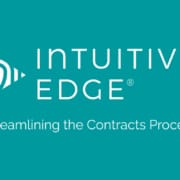How Six Sigma Methods Can Streamline Contract Transitions in Spin-Off Acquisitions
 In the dynamic world of mergers, acquisitions, and spin-offs, contract transitions often represent a complex and critical component of the process. When a company is being spun off, it involves not only separating and redistributing resources but also ensuring that all contractual obligations—vendor agreements, customer contracts, and internal service contracts—are smoothly transferred. One powerful methodology that can help streamline this process is Six Sigma.
In the dynamic world of mergers, acquisitions, and spin-offs, contract transitions often represent a complex and critical component of the process. When a company is being spun off, it involves not only separating and redistributing resources but also ensuring that all contractual obligations—vendor agreements, customer contracts, and internal service contracts—are smoothly transferred. One powerful methodology that can help streamline this process is Six Sigma.
Six Sigma, a data-driven approach aimed at process improvement and defect reduction, can be applied effectively to contract transition processes during a spin-off acquisition. Here’s how Six Sigma principles can mitigate risks, improve efficiency, and create a more seamless transition.
1. Defining Contractual Objectives
At the heart of Six Sigma lies the DMAIC (Define, Measure, Analyze, Improve, Control) methodology. The first step, Define, is critical for aligning stakeholders on the contractual objectives during the spin-off process. Contracts often involve intricate terms and conditions tied to service levels, deliverables, or pricing models. A clear definition of key goals, including which contracts are prioritized and what success looks like for a smooth transition, is essential.
By defining the process and expectations, Six Sigma helps ensure that the team responsible for the contract transition has a unified vision and a roadmap that accounts for various stakeholder needs, from legal teams to procurement and operations.
2. Measuring Existing Contract Performance
The next step in the DMAIC framework is Measure. For contracts, this means gathering data on the current performance of each contract, including service levels, compliance metrics, and financial obligations. This analysis enables teams to determine which contracts are performing well and which might present challenges during the spin-off.
Six Sigma tools like Control Charts and Capability Analysis can be employed to measure the variability in contract performance. By doing so, potential risks can be identified, such as service delays, non-compliance issues, or excessive costs. These insights help determine where focused improvements can have the greatest impact during the transition.
3. Analyzing the Risks and Opportunities
The Analyze phase focuses on identifying root causes of any inefficiencies or defects within the existing contracts. During a spin-off, common challenges might include unclear terms regarding contract termination, lack of alignment between vendors and the new entity, or missing change-of-control provisions. These risks need to be addressed to prevent disruptions post-spin-off.
Using Six Sigma techniques like Cause-and-Effect Diagrams (also known as Fishbone Diagrams), teams can visualize the potential risks associated with each contract transition. This analysis allows organizations to be proactive, identifying contracts that may require renegotiation, early termination, or realignment before they affect the success of the newly spun-off company.
4. Improving Processes with Clear Action Plans
The Improve phase of Six Sigma is where optimization occurs. With a clear understanding of which contracts are at risk and why, teams can develop action plans to mitigate these risks. Process improvements could include creating standardized templates for contract transitions, establishing clear communication channels with vendors, or simplifying legal reviews by categorizing contracts based on risk levels.
Additionally, Lean principles—often integrated with Six Sigma—can be leveraged to eliminate waste in the contract transition process. This could involve automating repetitive tasks, like document retrieval or status reporting, to increase efficiency and reduce manual errors.
5. Controlling the Transition Process
Finally, the Control phase is where the improvements are monitored and maintained. In the context of contract transitions, this might involve establishing new governance frameworks for ongoing contract management, assigning contract owners, and using dashboards to track progress in real-time.
One key tool in Six Sigma for ensuring long-term success is the Control Plan. This plan ensures that the process improvements made during the spin-off transition continue to deliver value over time, preventing the reintroduction of inefficiencies or risks that could disrupt the new organization.
Six Sigma’s Broader Impact on Spin-Off Acquisitions
Applying Six Sigma methods to contract transitions during a spin-off acquisition doesn’t just ensure smooth operations in the short term—it also helps build a foundation for the future. As contracts are optimized and inefficiencies are reduced, the newly independent entity can focus on growth and innovation rather than firefighting operational issues.
Moreover, by standardizing the contract transition process, companies can replicate these improvements in future transactions, further enhancing their strategic agility in mergers and acquisitions.
Conclusion
In the high-stakes world of spin-off acquisitions, contract transitions can make or break the success of the newly formed entity. Six Sigma provides a structured, data-driven approach to managing this critical process. By defining clear objectives, measuring current performance, analyzing risks, improving processes, and maintaining control, Six Sigma helps ensure that contract transitions are smooth, efficient, and aligned with the broader goals of the business. For organizations undergoing a spin-off, integrating Six Sigma into the transition strategy can provide a significant competitive edge, reducing risks and setting the stage for future success.
At In2edge, we specialize in guiding businesses through the complexities of spin-offs and carve-outs, offering hands-on, expert-driven solutions to ensure seamless transitions. Our approach focuses on executing efficient, data-backed strategies—whether it’s optimizing contract management, ensuring operational continuity, or maximizing value creation. With our deep expertise and commitment to delivering exceptional outcomes, In2edge is your partner for navigating the intricate challenges of spin-offs and carve-outs, setting your business up for long-term success.


 Setting: Two separate conference rooms, one buzzing with chaos and the other humming with efficient processes during a high-volume procurement contract transition post-acquisition.
Setting: Two separate conference rooms, one buzzing with chaos and the other humming with efficient processes during a high-volume procurement contract transition post-acquisition. I recently interviewed Peter Connor, the author of “The T Shaped Lawyer”. The concept of the T-shaped lawyer is revolutionizing the way the legal industry approaches and serves its business clients, whether it be in-house counsel or law firm lawyers. This model of professional development emphasizes not only deep legal expertise (the vertical bar of the ‘T’) but also a broad set of skills across various disciplines (the horizontal bar of the ‘T’). In my world, such lawyers are vital in the M&A process, specifically during transitions and integrations, where understanding a wide array of business, strategic, and interpersonal dynamics can significantly influence the outcome of a deal.
I recently interviewed Peter Connor, the author of “The T Shaped Lawyer”. The concept of the T-shaped lawyer is revolutionizing the way the legal industry approaches and serves its business clients, whether it be in-house counsel or law firm lawyers. This model of professional development emphasizes not only deep legal expertise (the vertical bar of the ‘T’) but also a broad set of skills across various disciplines (the horizontal bar of the ‘T’). In my world, such lawyers are vital in the M&A process, specifically during transitions and integrations, where understanding a wide array of business, strategic, and interpersonal dynamics can significantly influence the outcome of a deal. The landscape of antitrust interventions in the United States has been dramatically shaped by major corporate breakups, particularly the historic dismantling of the Bell System in the 1980s and the hypothetical scenario of a Google split today. Both cases, though decades apart, highlight the government’s role in curbing the dominance of single entities to foster competition, innovation, and consumer benefits. This article explores the parallels and differences between these two landmark cases and their implications for the tech industry today.
The landscape of antitrust interventions in the United States has been dramatically shaped by major corporate breakups, particularly the historic dismantling of the Bell System in the 1980s and the hypothetical scenario of a Google split today. Both cases, though decades apart, highlight the government’s role in curbing the dominance of single entities to foster competition, innovation, and consumer benefits. This article explores the parallels and differences between these two landmark cases and their implications for the tech industry today. Navigating Gun-Jumping in Mergers and Acquisitions: A Guide for Due Diligence and Contract Transition
Navigating Gun-Jumping in Mergers and Acquisitions: A Guide for Due Diligence and Contract Transition Choosing the Right AI and Data Analytics Tools for Contract Review: A Guide to Efficiency and Reliability
Choosing the Right AI and Data Analytics Tools for Contract Review: A Guide to Efficiency and Reliability The Spectrum of Chaos in M&A Transitions: The Critical Role of Third-Party Expertise
The Spectrum of Chaos in M&A Transitions: The Critical Role of Third-Party Expertise The Three Pillars of Successful M&A Integration: Insights from Vidur Bhandari
The Three Pillars of Successful M&A Integration: Insights from Vidur Bhandari In the complex world of mergers and acquisitions (M&A), the integration process is as critical as the deal itself. However, all too often, integrators are siloed from the deal-making team, leading to missed opportunities and challenges during the integration phase. Integrating these roles more closely can significantly enhance the success of M&A transactions by ensuring that value synergies are identified early and relationships are forged that will facilitate smoother integration activities later on.
In the complex world of mergers and acquisitions (M&A), the integration process is as critical as the deal itself. However, all too often, integrators are siloed from the deal-making team, leading to missed opportunities and challenges during the integration phase. Integrating these roles more closely can significantly enhance the success of M&A transactions by ensuring that value synergies are identified early and relationships are forged that will facilitate smoother integration activities later on.

